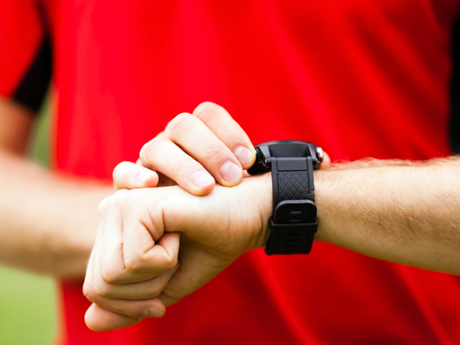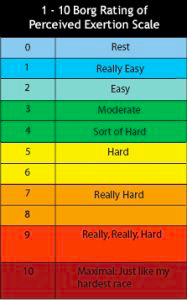Intensity For Running
Running, May 14, 2019
Intensity is the key to the success of your running. By training at the correct intensities, we can manipulate the physiological responses your body gets. This will generate the greatest improvement from where your running fitness currently is.
Intensity is the key to the success of your running. By training at the correct intensities, we can manipulate the physiological responses your body gets. This will generate the greatest improvement from where your running fitness currently is.
There are a number of different ways of measuring or estimating intensity depending on what features your watch has (or whether you even use a watch).

With in my training plans and workouts the intensity is described using my Level’s system:
- Level I
- Very low intensity and is not used in this programme.
- Level II
- A low to moderate intensity, at this level it is easy to converse with any training partner.
- Whilst running at this intensity you will improve the efficiency of your heart and lungs and also increase the density of the mitochondria in your muscle fibres. Your lungs will transfer oxygen for the air into the blood, and carbon dioxide back the other way more easier. Your heart will be bigger and pump more blood with each beat. More blood being pumped means more oxygen gets carried to the muscles. The mitochondria within the muscles will utilise this oxygen as it converts energy to create the muscle contractions.
- Level III
- A moderate intensity level and is only used on some of the sessions. We get more bang for our buck at higher and lower intensities.
- Level IV
- Threshold level, this intensity will hurt, but not so much that you can’t run at it. It is a pace that you can sustain for a while, but not for ever. If you tried talking to a training partner whilst running at this level you would only get out short sentences.
- At this level you will be producing lactic acid. Although lactic acid is what creates the burning sensation in the muscles, lactic acid provides us with plenty of benefits as well. When converted in the liver, lactic acid gets turned in to pyruvate which in turn can get used as an energy fuel. Training at this intensity develops your ability to tolerate lactic acid, which in turn means you can then make greater use of the benefits pyruvate provides.
- Level V
- VO2 Max level, this intensity will hurt (lots), but not so much that you can’t run at it for a few minutes at a time. If you tried talking to a training partner whilst running at this level you would only get out a few words but mainly grunts and groans whilst trying to suck in more air.
- Running at this level helps develop your VO2 Max (or put another way it helps improve the volume of oxygen you can utilise at your maximise intensity). To improve this you need to work at your maximum.
Pace Zone
Utilising running pace is one of the most common methods of determining running intensity. With the influx of a great range of GPS watches from companies like Garmin, TomTom and other companies, your pace can be easily measured and monitored.
The thing to be aware of is that running intensity is also influenced by the terrain you are running. Running at 6:30 min/km (~10:30 min/mile) on the flat is different to running at that same pace uphill which is again different to running that same pace on a downhill.
I recommend using the Pace Zone Index. These have been devised by Matt Fitzgerald in his book The Runner’s Edge. But you can also use Jack Daniels’ PhD work with his VDOT system from his book Daniels’ Running Formula. You will take your 5km time and then looking across the chart you will see what pace you should be running at for each respective Level.
Level II closely aligns with Matt Fitzgerald’s PZ3 or Jack Daniels’ E pace. Level III closely aligns with Matt Fitzgerald’s PZ4 or Jack Daniels’ M pace. Level IV closely aligns with Matt Fitzgerald’s PZ6 or Jack Daniels’ T Pace. Level V closely aligns with Matt Fitzgerald’s PZ8-10 or Jack Daniels’ I Pace.
There are various calculators online or within Training Peaks that you can use to calculate these intensities.
Power Zones
With prices of running power meters getting more reasonable with products like Stryd selling for less than US$200 more people are using them. A power meter measures (technically they estimate your power base on an algorithm with other inputted data), how much power you are generating and is irrelevant of terrain. Training with a power meter can be very effective, more so than training with pace.
To establish your power zones you need to calculate your FTP from the results of a FTP run test. Take the average power from the 3 minute section of the test and add it to the average of the 9 minute section. Divide this number in two then take 90% of that result to establish what your FTP is.
For example last time I did this test I achieved 356 Watts for the 3 minute section and 343 Watts for the 9 minute section. Adding them together gives 699 Watts, then dividing by 2 equals 350 Watts and 90% of that gives a FTP of 315 Watts.
| Level | % of FTP |
| Level II | 81 - 88% |
| Level III | 89 - 95% |
| Level IV | 96 - 105% |
| Level V | >106% |
Calculating the Power Zones for my FTP of 315 Watts put my Level II zone at 255 - 277 Watts, Level III zone at 280 - 299 Watts, Level IV zone at 302 - 331 Watts, and Level V zone is above 334 Watts.
More details of this session can be found here: https://www.coachray.nz/2017/05/12/friday-fartlek-run-3min9min-power-test/
For a great read on the topic of Running with Power and also watch my YouTube video in this article: https://www.coachray.nz/2018/05/28/run-with-power/
The gold standard on this topic is the Run with Power book by Jim Vance
Heart Rate
Heart Rate (HR) is the least reliable of the data that your watch potentially will display. The reason why is HR is a response to intensity, not a direct measure of intensity in itself. HR can also be influenced by many factors: such as how much sleep you got last night and the quality of that sleep; how well hydrated your are, or how well fuelled you are; it is impacted from fatigue from other sessions and what else you have done in this session; environmental conditions (heat or cold); and is also influenced by prescription drugs (eg. beta blockers), recreational drugs (eg. coffee/caffeine), as well as illicit drugs (other stimulants). As you can see with a raft of variables that will influence your HR, your HR at a given intensity one day could be vastly different on another day due to a combination of the above factors.
However, sometimes HR is our best tool to measure intensity (in the absence of power or pace). If you are wanting to train using HR, you will need to do a 30 minute Time Trial.
Take your average HR from the last 20 minutes of the 30min Time Trial and use this as your Threshold HR, to work out your respective HR Zones calculate the percentages of your Threshold HR:
| Level | % of Threshold HR |
| Level II | 69 - 83% |
| Level III | 84 - 94% |
| Level IV | 95 - 105% |
| Level V | 106 - 116% |
More details can be found here: https://www.coachray.nz/2019/03/01/friday-fartlek-run-30min-time-trial/
Rating of Perceived Exertion

In the absence of any definitive data to rely on to manage your training, you might need to resort to your own internal perception of how hard you are running. It might be that you don’t own a Garmin (or similar device) or maybe you left it behind (intentionally or otherwise) when setting off to do a workout. Having some internal cues to help monitor your exercise intensity can help you get the most out of these sessions.
Borg Scale is a scale from 0 through to 10, that you determine where on that scale you are subjectively.
| Level | Borg Scale |
| Level II | Borg 3-4 |
| Level III | Borg 5-6 |
| Level IV | Borg 7-8 |
| Level V | Borg 9-10 |
